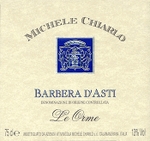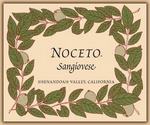The tomato, native to western South America and Central America, was first introduced to Europe when Cortez brought seeds back from Montezuma’s gardens in the early 1500s. Thirty years later, the fruit was introduced into the Spanish kingdom of Naples, became popular and marinara sauce was born.
“Marinara” is derived from “marinaro” or “of the sea”. Eventually “marinara” translated to “sauce of the sailors”, since the sauce remained preserved due to the absence of meat, the acid in the tomatoes and the ease of preparation.
Concocted from tomatos, onions and herbs, this meatless sauce has hundreds of variations and remains especially popular since recent research revealed that cooked tomatoes have even more cancer-fighting lycopene than raw. So, how to pair wine with this wonderful, adaptable sauce? Three sommeliers and one master chef present us with several appealing, and even surprising, selections:
 My preferred treatment of marinara sauce is to sweat out a classic mirepoix of carrots, onion and celery with garlic in olive oil. Add a bay leaf and tomatoes and simmer for 20 minutes. The entrée is bright with acidity as tomato is the core ingredient. For pairing these flavors that are very focused, pure and precise, I suggest a 2006 Michele Chiarlo Barbera d’Asti Le Orme. This barbera is fresh and tart with dark berry fruit, dusty earth, a hint of leather and black pepper. Chiarlo is a traditional producer and this bottling never sees new oak. The striking acidity and moderate tannins make the barbera a good partner for this classic sauce, and acidity is the common thread between the marinara sauce and the wine. It seems counter-intuitive, but acidic food needs acidic wine. Once the acid structure is aligned between food and wine, the sense of acidity is brought into balance. Acid almost always wins, so don’t try to challenge it, but work with it. Also, acid-driven food generally does not do well with tannin. What separates barbera from other acidic varietals like sangiovese and barolo is its moderate tannin profile. – Yoon Ha, Sommelier, La Toque Restaurant, Napa CA.
My preferred treatment of marinara sauce is to sweat out a classic mirepoix of carrots, onion and celery with garlic in olive oil. Add a bay leaf and tomatoes and simmer for 20 minutes. The entrée is bright with acidity as tomato is the core ingredient. For pairing these flavors that are very focused, pure and precise, I suggest a 2006 Michele Chiarlo Barbera d’Asti Le Orme. This barbera is fresh and tart with dark berry fruit, dusty earth, a hint of leather and black pepper. Chiarlo is a traditional producer and this bottling never sees new oak. The striking acidity and moderate tannins make the barbera a good partner for this classic sauce, and acidity is the common thread between the marinara sauce and the wine. It seems counter-intuitive, but acidic food needs acidic wine. Once the acid structure is aligned between food and wine, the sense of acidity is brought into balance. Acid almost always wins, so don’t try to challenge it, but work with it. Also, acid-driven food generally does not do well with tannin. What separates barbera from other acidic varietals like sangiovese and barolo is its moderate tannin profile. – Yoon Ha, Sommelier, La Toque Restaurant, Napa CA.
---------------------------------------------------
Tomatoes beg for the high-acid, fresh fruit of chianti, and fresh tomatoes are a must for the grassy acidity of a crisp sauvignon blanc or northern Italian white wine like erbaluce or friulano. – Chris Blanchard, Master Sommelier, Chappellet Winery, St. Helena, CA.
Editor’s Note: The erbalauce grape is grown in an area by the same name,located in the piedmont region north of Turin in northern Italy. The wine is typically dry, but with prominent apple aromas and flavors. However, a sweet, rich dessert wine is also made from the erbaluce grape. The acidity in the dry version is an eager partner to the acid in the tomatoes.
Friulano also hails from northern Italy in the Friuli-Venezia Giulia region. The wine made from the friulano grape is usually crisp and floral with hints of nuts and fennel. Although enthusiasts may not immediately think of a white wine with a red sauce, they will be pleased with the spicy marriage of the fennel notes in the friulano with the herbs in the sauce.
---------------------------------------------------
 My stepfather’s stepfather was an Italian immigrant from the Bronx. As a young man, he drove a cab for many a famous mobster in the 1930s and later told great stories about the good old days. As a young girl, I would go with my family to Grandpa’s house for Sunday dinner hoping the whole way there for his “spaget”. The red sauce was seasoned with garlic, onions, peppers, hot Italian sausage, meatballs made of pork and beef full of garlic. He would simmer it for hours. My family would normally have enjoyed a jug of Carlo Rossi’s finest “Burgundy”. However, when I make this “spaget” I choose to pour Vino Noceto’s Sangiovese Normale from Amador County. The fruity start blends with the herbs and garlic as hints of pepper and a touch of acid on the finish balance with the tomato. The wine is always gone before we finish our meals! – Tracey Berkner, Owner and Sommelier, Taste Restaurant, Plymouth, CA & The Union Pub & Inn, Volcano, CA.
My stepfather’s stepfather was an Italian immigrant from the Bronx. As a young man, he drove a cab for many a famous mobster in the 1930s and later told great stories about the good old days. As a young girl, I would go with my family to Grandpa’s house for Sunday dinner hoping the whole way there for his “spaget”. The red sauce was seasoned with garlic, onions, peppers, hot Italian sausage, meatballs made of pork and beef full of garlic. He would simmer it for hours. My family would normally have enjoyed a jug of Carlo Rossi’s finest “Burgundy”. However, when I make this “spaget” I choose to pour Vino Noceto’s Sangiovese Normale from Amador County. The fruity start blends with the herbs and garlic as hints of pepper and a touch of acid on the finish balance with the tomato. The wine is always gone before we finish our meals! – Tracey Berkner, Owner and Sommelier, Taste Restaurant, Plymouth, CA & The Union Pub & Inn, Volcano, CA.
---------------------------------------------------
I like Marinara sauces around the end of summer, when I have time to pick all my vine ripened Roma tomatoes, season them and combine them with onions, garlic and oregano. When I am ready to serve, I combine this sauce with a gastronomic gift from the culinary God, and that gift is Parmesan cheese.
I really enjoy this simple dish with a very complex wine from Italy called a Recioto della Valpolicella Amarone. The cheese calms down the tannins of the red wine and the slight sweetness of the wine counters the saltiness of the cheese, while the acid in the wine combines well with the acid from the tomatoes in the sauce. Simple dish, complex wine. Yes, it works really well. – Master Chef Roy Salazar, Instructor and Project Manager, Le Cordon Bleu California Culinary Academy, San Francisco, CA. Certified Master Chef, Taster and Sommelier [Europe] and leader in several independent projects.






